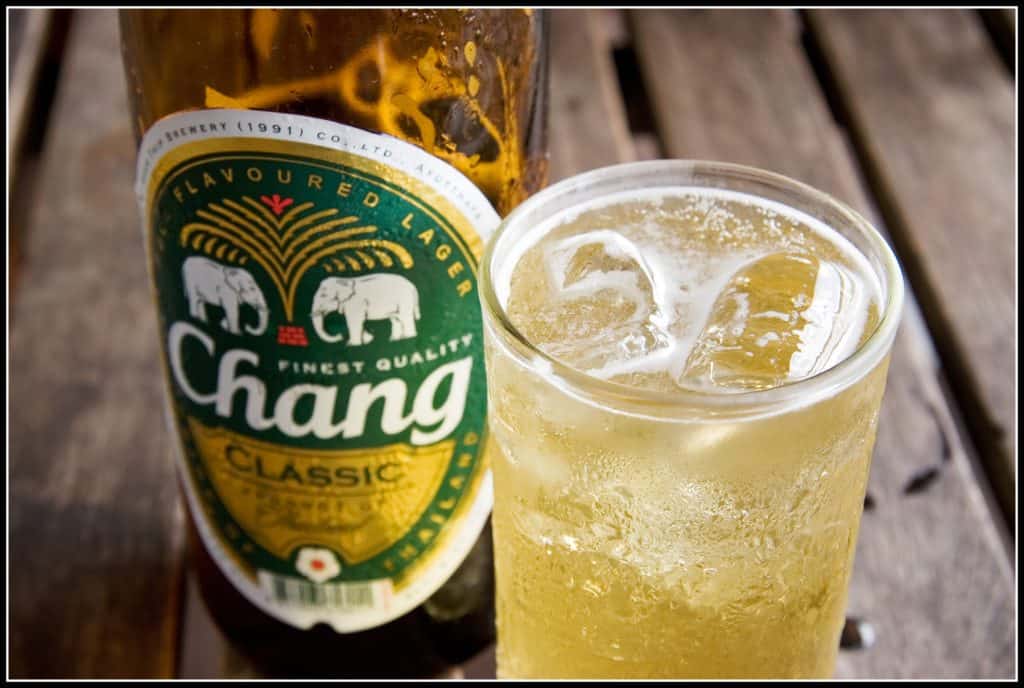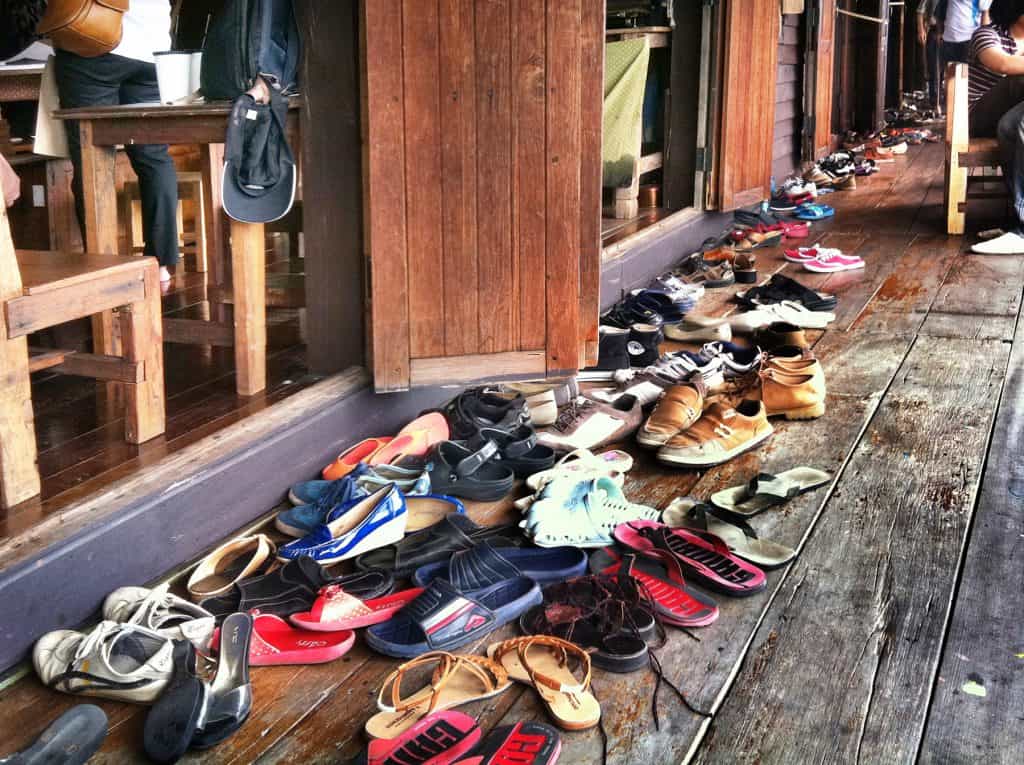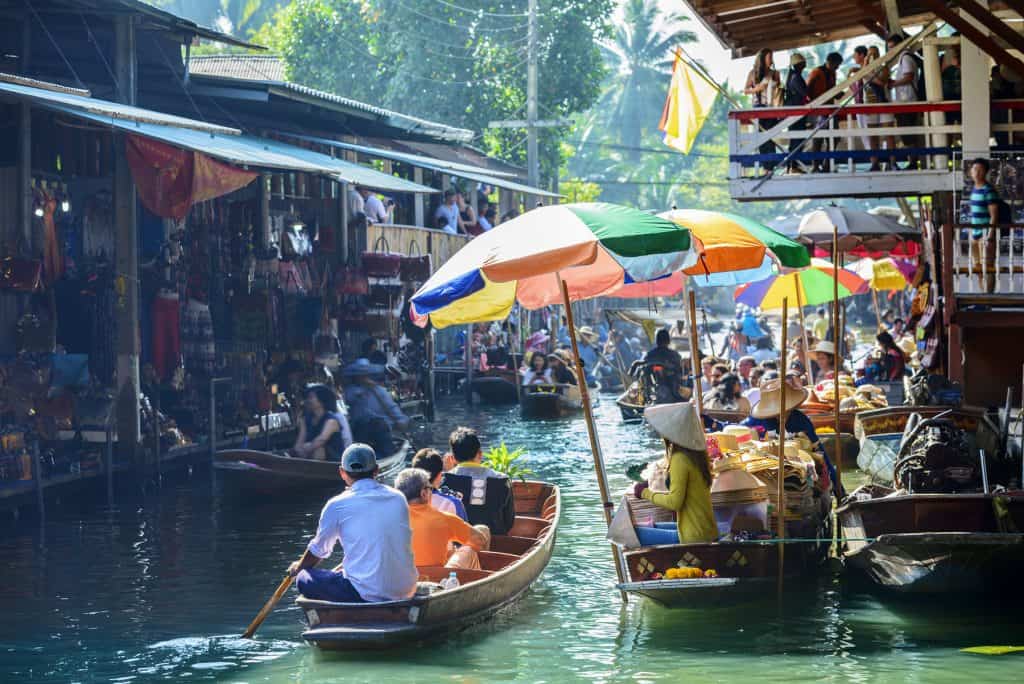Contents
Thai Massage
Known as Nuad Thai, Thai massages are a very popular Thai tradition amongst the locals and have become very popular with the tourists as well. Thai massages were actually Thailand’s second cultural heritage to be included on UNESCO’s List of Intangible Cultural Heritage of Humanity this past year.
If you’ve been to Thailand, you would know how popular Thai massages are with what seems to be multiple massage shops located on any given street. As you walk down some streets it is almost like a chorus of massage offers from the friendly locals outside their shops as they invite you to choose their shop for a massage.
Developed over 2,500 years ago, Thai massages are known for their many benefits including muscle relaxation, pain relief, stress reduction, and energy boosts. Thai massages are performed without lotion and oil and incorporate many stretching positions unlike other popular forms of massages.
While in Thailand, getting a Thai massage is a must! If you haven’t had one before, go in with an open mind knowing it won’t be your traditional laying down backup style massage and get ready for a new unique experience. Another plus is that you can get a Thai massage for a small fraction of the price of what you would pay in a Western country.

Insect Snacks
Silkworm, grasshoppers, giant water bugs, and crickets are a few of the most popular insects to snack on around Thailand. Yes, you read that correctly. Snack on, not try eating for a dare. As interesting as it might sound to anyone unfamiliar with the tradition, insects, worms, and bugs for snacks are the norm in Thailand.
The insects are fried and seasoned typically with Thai pepper powder or the famous Golden Mountain Sauce. You will often find locals enjoying their insect snacks in the company of friends with a beer.
Trying insects has become more popular among tourists visiting Thailand. You can often find them sold by street vendors, markets, and always at Temple Fairs throughout Thailand. Would you dare to give one of these insects a try?

Communal Meals
While many of us go to a restaurant and each order our own dish all for ourselves, in Thailand everything is shared.
You will see families or groups of friends order several different dishes that all get placed in the middle of the table for sharing. Everyone has their own bowl or plate and chooses a few dishes to indulge in. It is custom to not fill your plate once with everything you will eat, but to fill with smaller portions and go back for more.
This is also how they eat in their homes. Meals are prepared for many family members and sometimes friends or neighbors to all eat together and help themselves to what is on the table. No, not everyone gets a dish to themselves, but then everyone gets to try a bit of all the delicious food prepared.

Ice-Cold Beer
To all the beer connoisseurs out there, this might make you cringe, but don’t write it off just yet. In Thailand, it is custom to have an ice-cold beer, literally.
Thailand can get very hot and be very humid. Because of this, in all of the outdoor bars, it can be hard to keep the beers cold – and no one wants to drink a warm beer. The locals had to get creative if they wanted to have a cold refreshing beer.
What has come to be tradition because of this is a crate of beer served to a table with a small glass for each drinker and a bowl of ice cubes. With this, locals put one large ice cube in their small glass and pour a little beer to fill the cup. Because of the small cup size and large ice cube size, you cannot fit the whole beer so you continuously have to refill. This means that your beer doesn’t get too watered down.
As strange as it sounds at first, you have to agree that a Chang on ice would be far better than a warm Chang on a hot day in Thailand.

Songkran
Songkran is the Thai New Year’s holiday celebration held yearly, always starting on April 13th. The festival is a time for friends and family to visit temples for prayer and offering and to pay gratitude to elders. During this time, there is always lots of local entertainment and fun happening all around Thailand.
One of the more interesting and definitely the most unique part of this festival is the water aspect. Throwing water is meant to wash away any bad luck from the previous year and to start the new year fresh. Thus, Songkran in Thailand has turned into the biggest water fight in the world.
Locals and tourists alike arm themselves with water guns preparing for a massive water fight! Chiang Mai is known to be one of the best cities to celebrate Songkran in. Everyone goes all out walking through the streets spraying strangers in a full-on three-day water fight. Trucks drive around with large buckets in the back. People riding in the back use smaller buckets to dump water on people they drive past completely soaking them!
If you have the opportunity to make it to Thailand for Songkran, definitely take it! Running through the streets for three days in a massive water fight is sure to be a highlight of your trip. Just be prepared to get wet and have your phone and wallet in a waterproof case.

Take Your Shoes Off!
In Thailand, you might notice that the locals take off their shoes when they are going into many establishments. This is a practice seen not just in Thailand, but in many countries in Southeast Asia and even the world.
The thinking behind it is that your shoes come into contact with the ground outside which is typically dirty. Therefore, taking off your shoes before you enter a home is a must. In other establishments including some shops, massage parlors, and temples it is required and respectful to remove your shoes before entering. When entering a new building, follow the lead and do what the locals to ensure you are being respectful of their customs.
In Thai culture, feet are considered to be the most unclean part of the body. It is considering very impolite to point your feet in the direction of someone else. Even more disrespectful is having your feet face Buddha. Keep this in mind when visiting temples and other religious structures.

Wai
One thing you will notice when interacting with locals whether it is walking into a restaurant or when you are getting out of a taxi is the way they greet you. The most common Thai greeting is known as the wai. It involves putting your hands together in a prayer position and bowing touching your nose to your hands.
This traditional greeting can mean hello, thank you, and goodbye. The higher the hands go to the face and the deeper the bow, the more respect is shown by the greeting. When greeting elders and monks is a time to bow deeper to show your respect for them.
Familiarizing yourself with this greeting and using it when interacting with locals is not only being respectful of their culture when visiting their country but will also make them happy. They love to see tourists trying to engage in their culture from their greeting to learning a few words in their language and trying their food. When traveling to any new area, it is important to learn about and respect their traditions and culture.
“Ká” and “Kráp”
When listening to Thai people speak, you may notice “ká” and “kráp” being used often at the end of sentences. These words are used to show respect when you are ending a sentence.
“Ká” is to be used by women, and “kráp” is to be used by men. Two good examples of using these are when saying hello and thank you. Females would say “sà wàtdii ká” for hello and “koopkhun ká” for thank you. Males would say “sà wàtdii kráp” for hello and “koopkhun kráp” for thank you.

Give your shot at using these greeting along with your wai bows while in Thailand! Even if your pronunciation is a little off, the locals still very much appreciate the effort.

When visiting Thailand, take note and try participating in all of these traditions. Some are more appealing than others (like snacking on insects), but when in Thailand, do as the Thai do!
More Information About Thailand Traditions
Does this article makes you wanna learn more about Thailand’s beautiful Culture and Traditions? Then check out this articles
- 11 Things You Should Know About Thai Culture – from Culture Trip
- 17 Thailand Festivals, Culture, Traditions and How to Experience Them – from TripCanvas
- Thailand’s history, culture and traditions – from Saga


